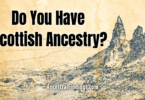The story of German immigration to America is one of the great migrations in modern history. Over five million people left the German-speaking lands between the early 1700s and the early 1900s, crossing oceans in search of freedom, work, and land. Many of their descendants live across the United States today, sometimes aware of those roots, sometimes not. If you have ever wondered whether your own family might trace back to Germany, the clues are often closer than you think.
Key Takeaways
- German immigration to America involved over five million people seeking freedom and opportunity from the 1700s to the early 1900s.
- The Pennsylvania Dutch were early German settlers who formed strong communities, while later waves included political refugees and farmers.
- To trace your German ancestry, start with American records like census data, church books, and ship manifests that reveal your family’s history.
- German immigrants significantly influenced American culture, introducing concepts like kindergarten and enriching traditions still evident today.
- Today, over 40 million Americans claim German ancestry, with DNA testing and digital archives making it easier to reconnect with roots.
The Long Road to America
German migration began centuries before Germany existed as a unified nation. In the seventeenth and eighteenth centuries, the Holy Roman Empire was a patchwork of small kingdoms, duchies, and free cities. Religious wars, heavy taxation, and poor harvests left thousands struggling. Families from the Palatinate, Baden, Württemberg, and Hesse began to look westward toward the promise of Pennsylvania and the lands beyond.
Those early settlers were not adventurers—they were survivors. Known later as the “Pennsylvania Dutch” (a corruption of Deutsch, the German word for “German”), they built tight-knit communities of farmers and craftsmen, brought their Bibles and hymnals, and printed the first German-language newspapers in North America. Their descendants still farm in Pennsylvania and the Shenandoah Valley today.
By the nineteenth century, a new kind of movement began. The failed revolutions of 1848 sent scholars, teachers, and artisans fleeing political repression. They joined waves of farmers leaving overcrowded villages, bound for the Midwest, where land was cheap and opportunity vast. Entire towns of German speakers appeared across Ohio, Wisconsin, Missouri, and Texas. Cincinnati became so thoroughly German that one newspaper declared it “a city transplanted from the Rhine.”
What to Look For in Your Own Family Tree
Many Americans with German heritage don’t realize it because their ancestors quickly blended into American society. But the clues remain, both in family traditions and in the records they left behind.
Surnames are the first key. Müller became Miller, Schmidt became Smith, and Schneider often turned into Taylor. Given names followed the same pattern: Wilhelm became William, Heinrich became Henry. If your family used both English and older European forms of names, you may be looking at a German branch.
Church affiliation offers another window. Lutheran, Catholic, and Reformed congregations were the backbone of German immigrant life. Many churches kept their records in German well into the twentieth century, and those registers often contain priceless information—sometimes even the name of the family’s original village in Europe.
Traditions provide subtler evidence. If your family’s holidays included a Christmas tree long before it became common in America, or if your grandmother baked stollen or lebkuchen every December, those habits came from across the Atlantic. German families carried their customs quietly, even when their language faded.
Following the Paper Trail
To trace your German ancestors, begin in the United States. Every journey back across the ocean starts with what was recorded here.
Census records from 1850 onward list each person’s birthplace and can help identify which generation first arrived. Passenger lists from the ports of Hamburg and Bremen—many now digitized—often give the traveler’s hometown or province. Naturalization papers can confirm both immigration dates and original citizenship, which is essential, because before 1871, your ancestor was not “German” but Prussian, Bavarian, or Hanoverian.
Church books in America are especially valuable. German-language congregations kept detailed baptism, marriage, and burial records that sometimes name relatives still living in Europe. These are often the bridge between the New World and the Old.
Once you know the specific town or parish, the search can move to Germany itself. The Kirchenbücher—church registers—are the foundation of European family research. They record births, marriages, and deaths reaching back centuries. After 1876, civil registration (Standesamt) began keeping official certificates that include occupations, addresses, and parents’ names. Local archives also preserve tax rolls, guild memberships, and emigration files (Auswandererakten) for those who left, sometimes with letters describing their reasons in their own hand.
The World They Built in America
German immigrants helped shape American culture in ways most people never notice. They introduced the concept of kindergarten, founded orchestras and breweries, and influenced architecture and education. The Midwest’s reputation for precision and craftsmanship owes much to its German settlers. Even ordinary words—kindergarten, delicatessen, lager—carry echoes of that influence.
Yet assimilation came at a price. During World War I, suspicion toward German Americans led many families to anglicize their names, stop speaking German in public, and quietly erase their heritage from view. Despite this, the culture endured in food, music, and faith. The Sunday church picnic, the Christmas market, the brass band at a town fair—all trace their origins to those immigrants.
Bringing the Story Full Circle
Today, more than forty million Americans claim some degree of German ancestry. DNA testing and digitized archives have made reconnecting with those roots easier than ever. With a few well-placed searches, you might find your ancestor’s signature on a ship manifest or discover a cousin still living near the family’s original village.
But beyond records and documents lies something deeper—a story of persistence and adaptation. To trace your German heritage is to understand not just who your ancestors were, but why they came: to own their land, to speak freely, to build a better life for their children. Their story became yours.
Share Your Journey
Do you have German ancestry? I’d love to hear what you’ve discovered—names, towns, family stories, or photographs that connect your past to theirs. Share your story on YouTube or Facebook so that others might find a piece of their own history reflected in yours.






